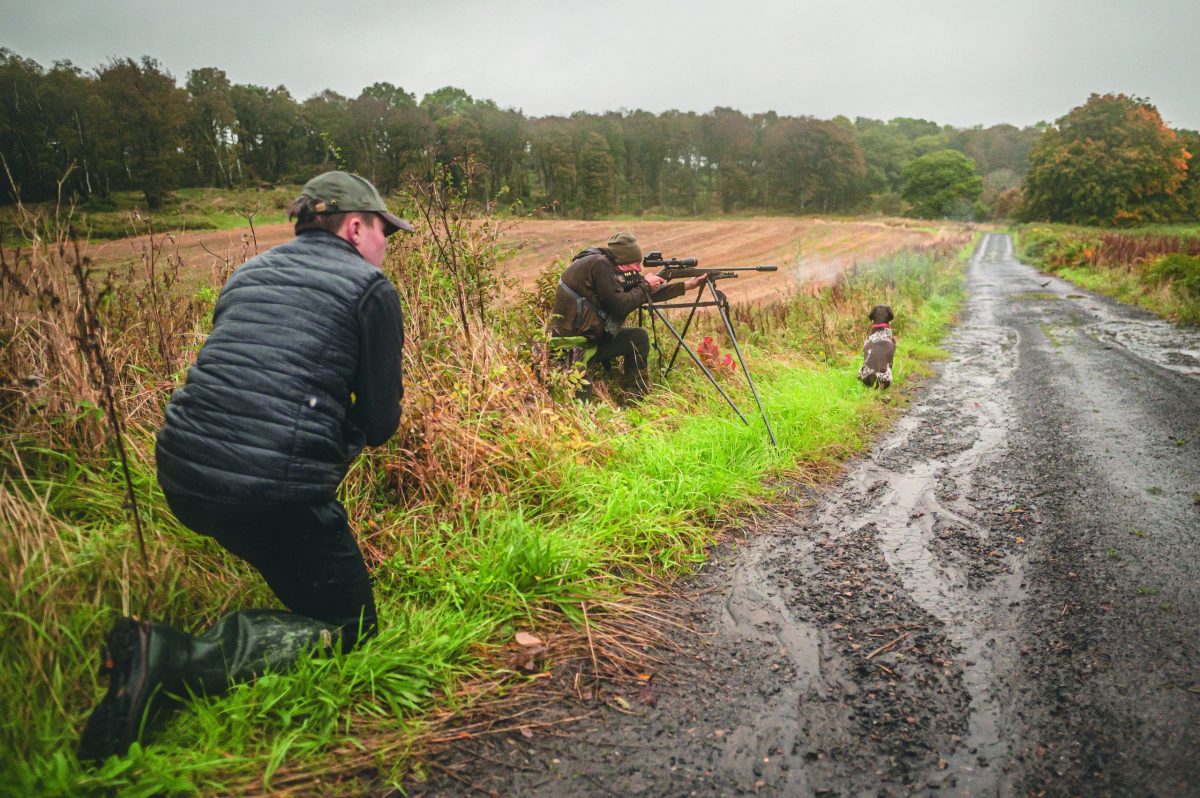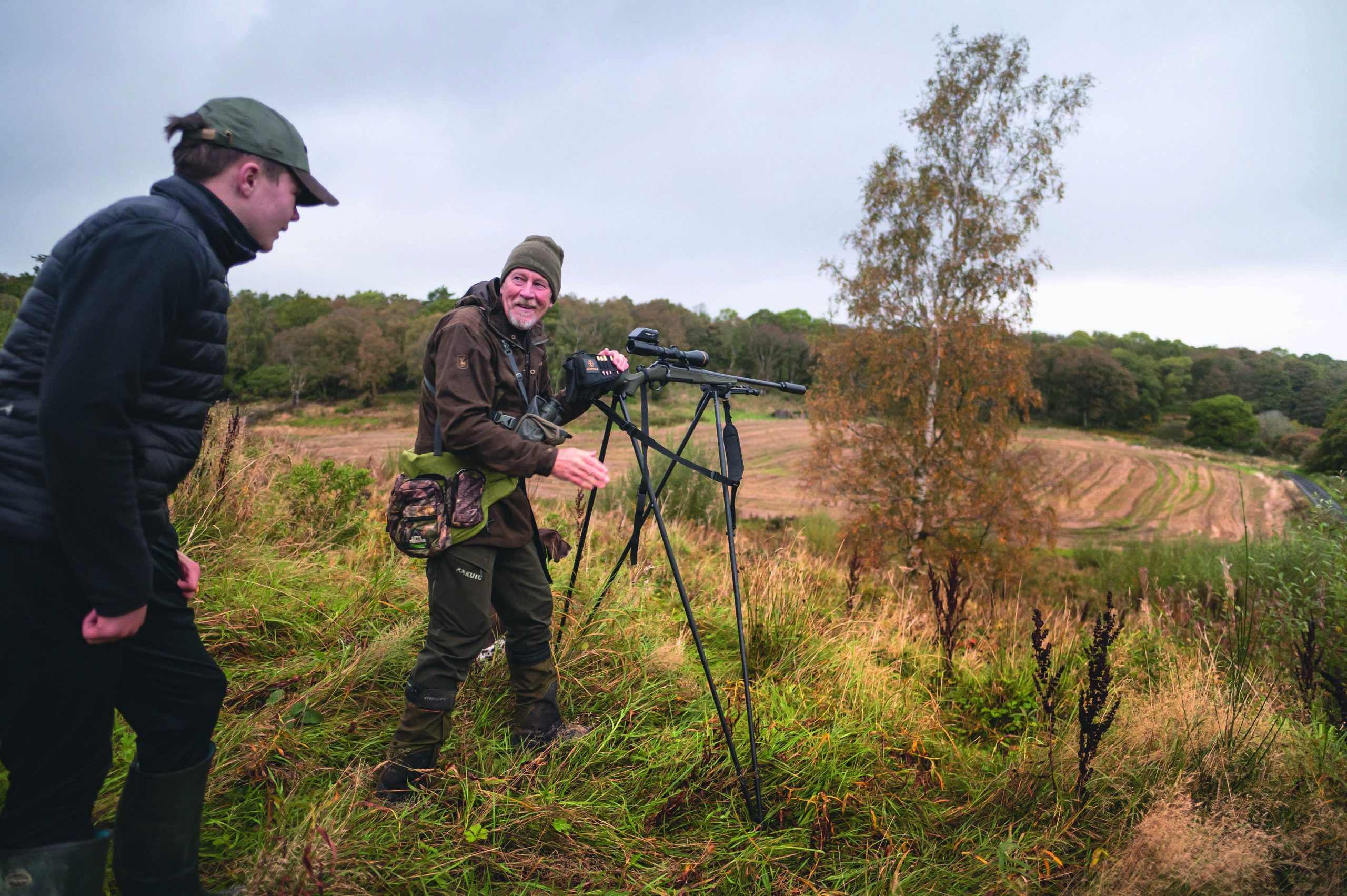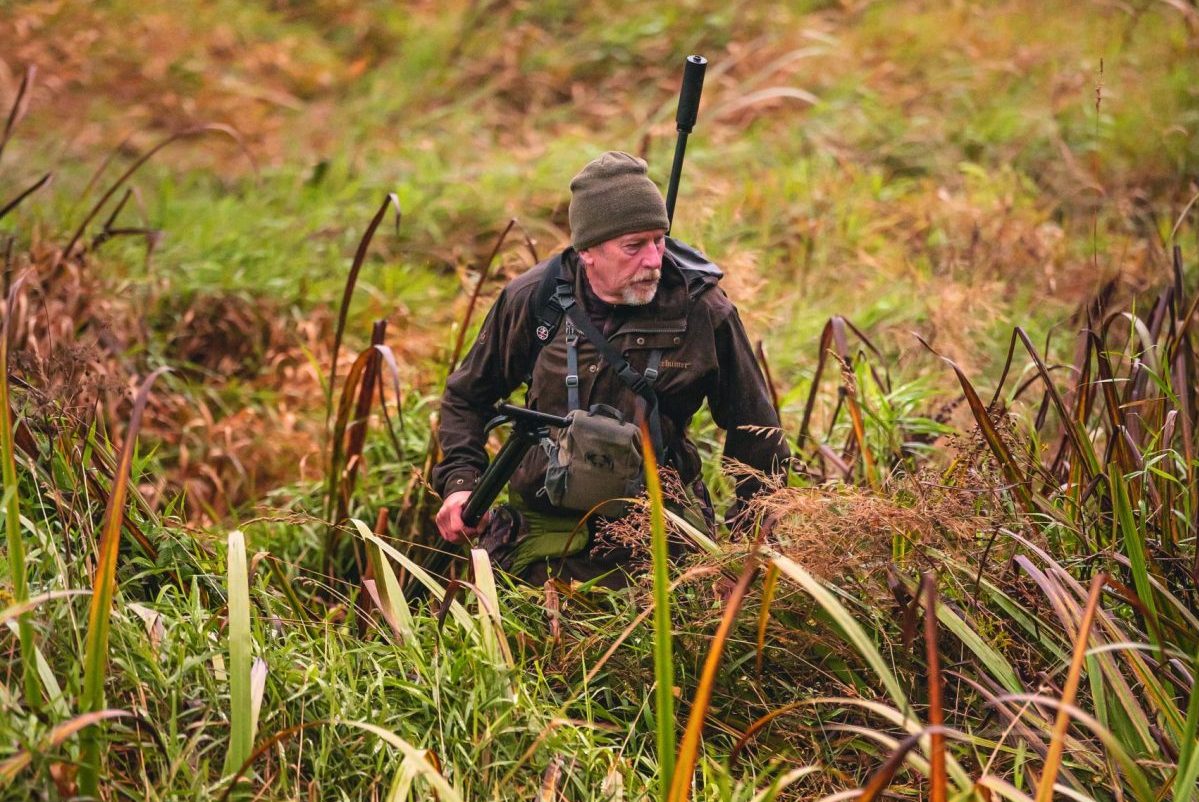Passing on deer stalking knowledge to the next generation is invaluable, writes Chris Dalton, as he takes farmer’s son Jake on a successful stalk
There’s a damaging portrayal of fieldsports in the media. I’m referring to anyone involved in country pursuits, from part-time beaters to veteran deer stalkers. Some come in for more stick than others but none of us are immune. My view is that we need to rebuff the critics wherever possible, rather than shying away from these conversations. The most proactive step we can take is to introduce the younger generations to our sport; they are the future after all.
I have found that, after the initial experience, plenty of youngsters are eager for more. I appreciate that it is not always easy to part a teenager from a mobile phone but if you can manage it, and get them out in the field just once, it often sparks something. The real difficulty with stalking however is that they must be 17 years of age before they can borrow a rifle — often referred to as the ‘estate rifle facility’. Although I am in favour of robust firearms legislation in general, this is one rule I feel is nonsense. Surely it is better to introduce a youngster to the safe use of firearms under the close supervision of a parent or guardian? Who’s better placed to know when a young individual is responsible enough to receive this instruction?
That said, the current rules do not prevent you from taking a lad, or lass, under your wing. I have had several clients over the years who have brought children or grandchildren along for the experience. Some of these youngsters are now returning to stalk themselves having reached the legal age. In the spirit of this educational process, I have been shadowed by the 14-year-old son of a local farmer, Jake, since he began to show an interest in shooting.

As Zosia and Jake watch on, Chris’s patience pays off as the young doe emerges and he takes his kill shot
First-hand encounter
Jake first came out with me shortly after his ninth birthday, when his father asked if he could see first-hand what stalking was all about. He was keen for Jake to understand more about the wildlife on the farm and the need for pest control along with deer management. His father was not sure how Jake would react to seeing a shot deer but wanted him to understand the field to fork process. Therefore, we agreed that he could tag along for some of my cull jobs — provided he didn’t have school that day.
Initially I took Jake on to the range, where he watched as I zeroed the rifle and explained about handling firearms and the key points of gun safety. I also showed him a couple of roe in the chiller, so he could get an idea of the final product. Unsurprisingly, he was buzzing after his first session. (Read our archive of venison recipes)
We’ve been on numerous stalks in the five years since; I still recall the first roebuck I shot with Jake in tow. It was a glorious morning and he was fascinated by the whole process, including the gralloch. The most recent outing was for a roe doe cull in an area I call ‘The Castle’. Jake was glad to join, although the area is very popular with dog-walkers, so we needed to be heading for home no later than 8:30am. The Met Office predicted south-west Scotland to be catching the tail end of the latest storms to hit the UK, and with strong winds and heavy rain it was certainly not ideal stalking weather. However, the poor weather could also keep the weekend dog-walkers inside a bit longer and work to our advantage.
An undetected arrival
‘The Castle’ has some sheltered woodland and plenty of cover so I was hopeful that Jake and I could spot a roe, despite the gloomy predictions. Roe do tend to heft to an area and I had watched family groups over the summer while stalking the bucks. The population was in excellent condition with a good retention rate and most had twins — one even had triplets.
I kitted up at the pull-in, just off a side road, while it was still dark. Jake fussed Zosia while I got ready, and together we headed off slowly down the farm track. Jake tucked in a few paces behind me; he knows the drill now. I moved cautiously on the grass at the side of the lane. Walking boots on the recently gravelled surface make too much noise. I paused every few steps to glass. We both watched the hound for any indication she scented deer.

The arrival of the morning’s dog-walkers ends the chance of further deer, and it’s time for Chris and Jake to return back with the doe
We continued along the track for 700 yards until we reached the fork in the road. The old castle ruins rose up to our right. To the left, the fork fell away, dissecting a stubble field and a patch of marsh ground covered in bracken and willows. I knew from experience that it would be unusual not to spot a deer feeding down below at this early hour. Jake took note. Resisting the temptation to rush off to this spot — something I have learnt not to do having been overeager before — we arrived quietly and undetected. On more than one occasion I have bumped into browsing deer on this route.
Still in semi-darkness I paused and took in the scene as the rising sun revealed the landscape. Jake and I chatted in a whisper. We discussed all things to do with the environment and he explained about the deer he had spotted in recon as he worked around the farm. We examined the condition of the cover crops, hedgerows and the area sown with wildflower mixes.
Two families of roe often frequent this place. A doe and her twins were often seen under the free-standing high seat at the edge of the rhododendrons, feeding out on the stubbles. Another family lived in the willows. Surely one of these groups would oblige this morning? Zosia was the first to tell us we had activity. She inched forward and sat on the track, pointing intently ahead with the occasional glance back at me. Eventually Jake saw movement in the rushes and I was able to identify three deer, a doe and two kids, partially obscured by a sycamore tree.

Chris sets up the quad sticks in anticipation of the first doe, but the animal is rear-on and doesn’t turn for a clean shot
Time to take a gamble
At that point the heavens opened, making it near impossible to see anything. I was concerned the rain, coupled with a cold wind, would push the deer into thicker cover. I gambled on moving closer. In doing so we lost the advantage of higher ground and being able to look down into the cover. As I was restricted to looking into the clearings, it was lucky that the deer were visible in an opening. One of the followers, the smaller of the two, appeared to be working towards the track that we were on.
I set the quad sticks anticipating where she would emerge. Zosia planted herself in front of me in anticipation of a kidney breakfast; Jake remained tucked behind. The doe emerged less than 100 yards in front of us and began browsing away from us. Zosia crept forward, a little too eager for breakfast. I hissed to call her back. Jake and I watched the rear end of the roe doe for a couple of minutes. Her small anal tush waggled and we expected her to make the turn broadside at any moment. But it didn’t happen. Instead she turned right and disappeared into the cover.
I thought our chance was gone. The mature doe suddenly stuck her head up, briefly looked around and bounced off, followed by one of the youngsters. But we did not see the third one go. I repositioned, setting the sticks to cover where the does had stood, and sure enough the second kid ambled into view. She paused to scratch her back end, presenting the perfect broadside shot. She fell instantly to the shot.

With careful referencing and Zosia’s nose, Chris locates the fallen deer in the dense vegetation
Fieldcraft and fortune
We had probably engaged with the deer for less than 30 minutes and I had already mentally chalked the outing as a blank. I hope, if Jake learnt anything from the outing, it’s that fieldcraft and fortune work hand in hand. He is always gaining understanding of the roe deer on the farm, their condition in general and awareness of the need to monitor numbers. He’s also becoming adept at identifying roe and differentiating between young and old beasts, and which ones we might shoot and why.
As we walked out into the rushes to collect the doe, our attention was drawn back to the track by a voice. A dog-walker went by, throwing a ball for her two collies, completely unaware of our presence.




